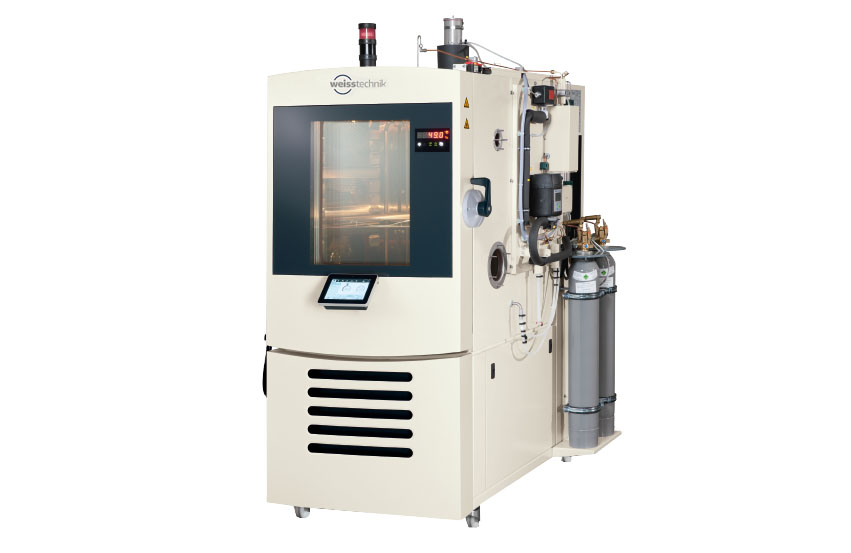Battery Test Chambers For Electric Vehicle Batteries: What You Need to Know
Battery test kits are important gear for ensuring the protection and reliability of electric vehicle (EV) batteries. These chambers are a key part of Automotive test Equipment, allowing the battery to be monitored under unique situations. Here’s what you want to know about them.
What is a Battery Test Chamber?
A battery test chamber, also known as a battery testing machine, is a managed environment in which batteries are examined. It simulates situations such as intense heat and freezing water to reveal battery performance. This is important to ensure green and safe EV battery overall performance in real-life situations.
Why are Battery Test Chambers Important?
Security trying out:
- They help ensure the battery does not overheat or damage, which may be dangerous.
Performance Analysis:
- Test labs check whether the battery performs as expected in conditions such as excessive or cold temperatures.
Longevity indicator:
- By simulating lengthy-time period use, they help in indicating how lengthy the battery will ultimately be.
Types of Tests Performed
Heat cycle:
- This testing involves exposing the battery to excessive and occasional temperatures to see how it handles thermal strain.
Humidity test:
- This looks at how water affects the battery’s overall performance and toughness.
Injury testing:
- This ensures that the battery is protected against vibration and surprise.
Key Features of Battery Test Chambers
Temperature manage:
A battery check chamber allows batteries to be heated or cooled to test their performance at intense temperatures. This enables them to recognize how to behave in hot summer weather or chilly winter weather.
Humidity manage:
The humidity stage can also be monitored to see how humidity affects the battery. This is essential because excessive moisture can cause corrosion and other problems.
Cycle checking out:
These chambers permit the battery to be repeatedly charged and discharged to simulate long-term use. This facilitates studying battery existence and reliability.
Safety system:
Exam rooms are typically equipped with safety equipment, such as fire extinguishers, to deal with any problems that could arise during testing.
Choosing the Right Test Chamber
Consider those factors while deciding on a battery. Take a look at the room:
Temperature:
Make cheerful sure the room can attain the temperature required for the take-a-look.
Water Use:
Choose a room that could appropriately simulate humidity.
Size and capacity:
Ensure the chamber is big enough for your batteries and can deal with multiple assessments simultaneously.
Advantages of Battery Test Chambers
Security Assurance:
- Advantage: Looking at the lab facilitates discovering capacity protection problems, such as overheating or leaks.
- Benefits: Reduces the risk of battery failure and injuries.
Performance Analysis:
- Advantage: Check battery overall performance at one-of-a-kind temperatures.
- Benefits: Ensures constant battery performance in actual global situations.
Durability checking out:
- Advantages: Experimental studies simulate long-term use and vicious conditions.
- Benefits: Determines how long a battery will last and how well it may be put on and tear.
Quality Control:
- Advantage: Helps producers preserve high battery best standards.
- Benefits: Ensures that each battery meets performance and protection standards.
Disadvantages of Battery Test Chambers
Worth:
- Disadvantages: Test chambers can be pricey to buy and keep.
- Impact: This can be a massive funding for a few producers.
Challenges:
- Disadvantages: Using the exam room might also require specialized information and education.
- Impact: Experienced employees may be required to monitor and interpret check consequences.
Space Requirements:
- Disadvantages: Tasting rooms can absorb loads of space.
- Impact: This may also require a committed workplace area, and there’s restricted space for other activities.
The time it takes:
- Disadvantages: Testing may be time-consuming, specifically in evaluating efficiently.
- Impact: Lack of upkeep can slow down the improvement method.
FAQs:
1. What does a battery test room do?
The battery looks at lab simulations of numerous eventualities to test battery performance. It helps ensure batteries are secure, dependable, and capable of dealing with severe temperatures and humidity.
3. Three. How does warmth trying out work?
Temperature testing in a battery check chamber exposes the battery to high and occasional temperatures. This allows us to decide if it is able to perform well in specific climate situations.
4. What is water trying out?
Water trying out examines the overall performance of a battery while exposed to water. It allows the balance and reliability of the batteries, even in moist or bloodless environments.
5. What is a shock check?
Shock checking out simulates vibrations and affects how the battery handles bodily pressure. It tests the battery’s durability and ability to withstand excessive conditions.
Conclusion
A battery check lab is essential to ensure the safety and efficiency of electrical automobile batteries. By simulating real-world conditions, they assist producers in creating dependable and long-lasting batteries. Investing in the right test laboratory can lead to higher battery life and safer electric automobiles.
Understanding how these take a look at orbits work can give you self-belief in the protection and performance of the EV battery you’re using or buying.
Stay in touch with us for more updates and alerts! Tamasha.blog






